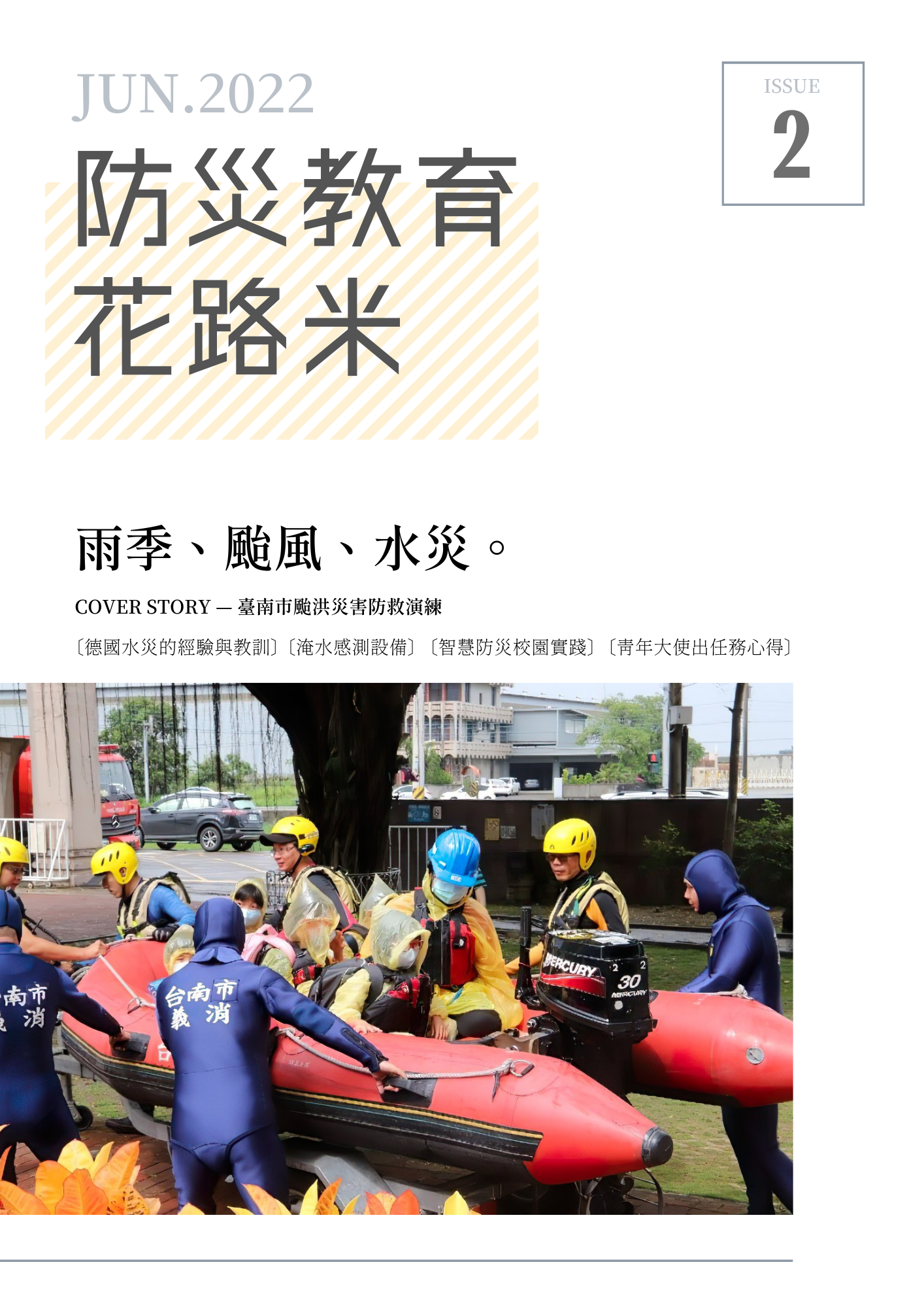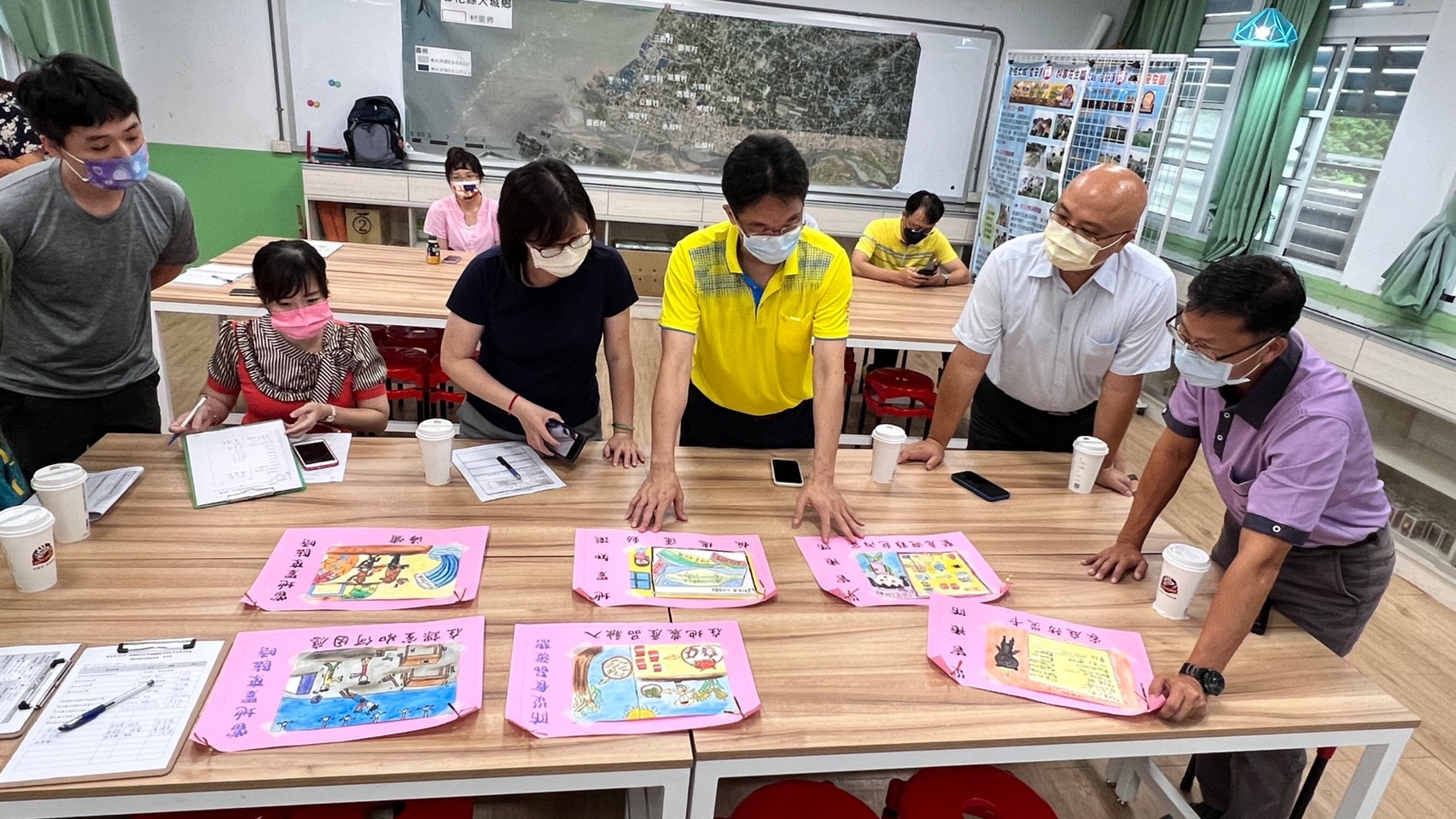“DRRE Follow Me” Newsletter 2022 NO.02 Abstract
08.07.2022

-
Date
-
08.07.2022 ~ 08.07.2022
-
Venue
- MOE
-
Tag
- #Activity
Introduction
Every May, the Republic of China (R.O.C. Taiwan) experiences the "flood period". Have you noticed the daily downpours recently? This rainy season will be immediately followed by the typhoon season, and these continuous heavy rains not only bring abundant rainfall but are also often accompanied by the problems of flooding. In the last international disaster review, it showed that in 2021, Western Europe, China, Japan, India, Indonesia and other places were subjected to very heavy rains. In terms of the R.O.C. (Taiwan), from geographical, climatic and rainfall patterns, it is clearly located on the route of the typhoon track; therefore, flooding is a natural inevitable disaster. Besides improving the engineering infrastructure, what contingency measures can we take to prevent this disaster?
The contents of this Newsletter issue will be focusing on flood disaster response. We will review the flood disaster which occurred in Germany in 2021, learn new knowledge about international disaster prevention, and examine disaster risk reduction frameworks, abilities and capacities of the R.O.C. (Taiwan). Based on the mature information, communication, and the foundation of the Internet of Things (IoT) technologies, many advanced countries are actively promoting the construction of intelligent cities. In the future, disaster prevention work in cities, communities, or campuses can provide real-time monitoring data and information based on flood notification and information broadcasting platforms. The monitoring data and information will be used by disaster prevention and relief utilities as a basis for assessment and judgment, and at the same time, it will assist the public to grasp the situation of local flooding matters, and thus gain valuable time to respond accordingly.
In this issue of the featured campus, it focuses on Zhongshan Junior High School in Kaohsiung City. This school applied a technology disaster warning application in its courses. This application monitors the flood-prone basements through a self-made water level detector and binds an account of LINE Notify to automatically notify and activate the sump pump. With this application, flooding situations can be immediately controlled and eliminated especially during heavy rainfalls. This is a successful demonstration of achieving smart disaster prevention on campus.
Having science and technology assistance, we can take action in advance, as well as implement the daily disaster prevention drills to achieve the essence of DRRE that can be applied at any time. The Tainan City Disaster Prevention Education Guidance Group conducts the flood disaster prevention and rescue drill before the flood period, and assesses the disaster prevention and response work such as flood prevention, shelter, evacuation, and campus restoration before the beginning of the rainy season. Under the cooperation between the school teachers and students, the fire brigades, and the district offices, they have shown solid and correct responses. Regular drills reduce losses and regrets during disasters.
Last but not least, the youth ambassadors of disaster prevention shared their experience of a one-day field study in Dacheng Township, Changhua County. The field study inspected the DRRE courses among four local schools, including Dacheng Elementary School. From the perspectives of the youth ambassadors of disaster prevention, they noticed the close links between the disaster resources, partnerships of mutual aid, and the cooperation among the four schools in Dacheng Township through their experience in the DRRE courses.
The new issue of the Disaster Prevention Newsletter is waiting for you to experience!






